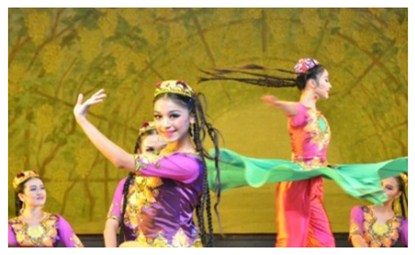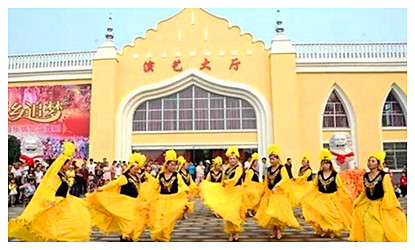Skype: neodalle-travel
Tel: +86 135 7447 2266
E-mail: sales@zhangjiajieholiday.com

 Uygur people usually engage in agriculture, but a small number are also good at business and handicrafts. Due to their long-term coexistence with the Han, the Uygur have taken Chinese as a common language, but still retain their own customs, religious activities, and daily life.
Uygur people usually engage in agriculture, but a small number are also good at business and handicrafts. Due to their long-term coexistence with the Han, the Uygur have taken Chinese as a common language, but still retain their own customs, religious activities, and daily life.Festivals of Uygur
The Corban Festival, the Noroz Festival, the Kaizhai Festival, and the Nuolu Festival are the most important festivals of the Uygur people.
Customs of Uygur
The Uygurs are believers in the Islamic faith. Over the centuries, many mosques, mazas (Uygur complexes, nobles' tombs), theological seminaries, and religious courts have been set up in Uygur areas.
Folk Culture and Art
 Uygur ethnic minority has its own language and alphabet, which belongs to the Turki Austronesian of Altai Phylum. They have two written languages, one based upon Arabian letters, the other based upon Latin letters.
Uygur ethnic minority has its own language and alphabet, which belongs to the Turki Austronesian of Altai Phylum. They have two written languages, one based upon Arabian letters, the other based upon Latin letters.
Uygur culture and art have flourished, and have a long and rich tradition. Uygur literature is very rich in style and subject matter, their oral literature mainly reflecting the Uygur's historical origins, heroic characters, social changes, and customs, in works such as "The Tales of Afandi".
Uygurs are excellent dancers. The "12 Mukams" (opera) is an epic comprising more than 340 classic songs and folk dances, and the "Daolang Mukams" is another, distinctively Uygur, suite.
Uygur musical instruments include the Dutar, Rawap and Dap. The first two are instruments with a clear and crisp tone, and are used for solo and orchestral performances. Dap is a sheepskin tambourine, with many small iron rings attached to the rim, and is used to accompany dancing.
Fengshu, a township of Taoyuan County. is home of Uygurs and Hui Ethnic minorities. The 32,000 people of Fengshu township are just 30 minutes by bus from downtown Changde, the nearest large city. A total of 12,000 of the town's residents are from ethnic minorities, including 7,800 Uyghurs and 2,300 members of the Hui people. As the second largest home for Uyghurs (outside of Xinjiang) it has earned the county a reputation and support from upper-level governments...More
 Ask Questions ?
Ask Questions ?